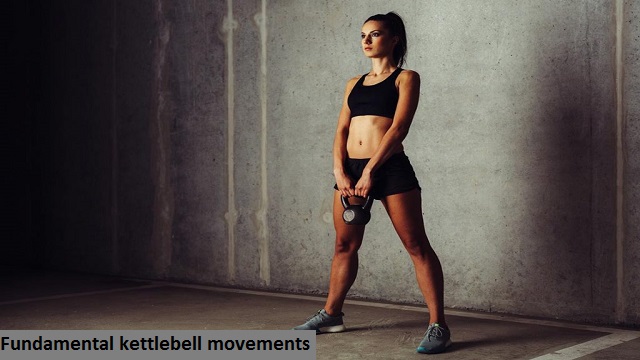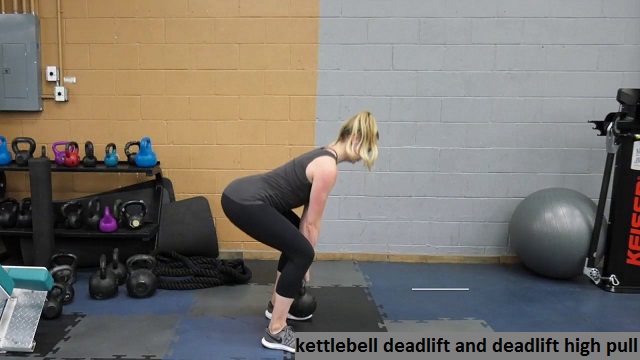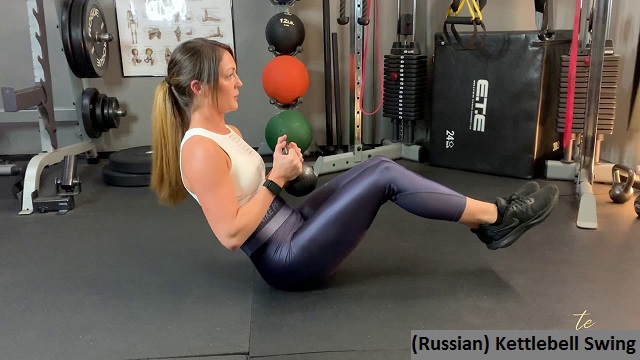
Every athlete needs to master these 8 fundamental kettlebell movements.
Kettlebells can be used for almost anything, which is what makes them so unique. There isn’t one movement or set of movements that is better than others, though. You can enhance your size, agility, strength, and even lose excess body fat.
It’s critical to master the fundamentals before attempting all the advanced exercises that you see fitspos perform online. In order to shape the future of your training methods and exercises, this entails having a fundamental understanding of the movements.
In this quick guide to the 8 Basic Kettlebell Movements Every Athlete Should Master, we’ll assist you in achieving that goal.
Full-body tension is produced during kettlebell movements.
The secret to building a strong swing with kettlebell movements is to use free weight exercises instead of machines, which create full-body tension. The following quick-tips will enable you to get the most out of your demanding workouts and become a lean machine in no time.
A Firm Position.
Strong stances are the foundation for all-body tension. Your feet should be roughly shoulder-width apart, with your toes pointing either straight ahead or at 11 and 1 o’clock (depending on your flexibility and strength). Starting with your shoulders squared off, feet firmly planted in the ground, and head in neutral position.
Awareness of one’s body.
You should begin by shifting your weight into your heels as you begin the swinging motion of the exercises, switching back and forth a few times.
This will be your strongest position if your feet are firmly planted on the ground. Maintain body awareness throughout the exercises, and as the weights rise, your feet should serve as the foundation for the rest of your body.
Core Participation.
To protect your back and give your legs the strength they need to do the work for you, bracing your core in your strong starting stance position is essential. Most of the time, the rest of the body generates the tension, force, and torque necessary to lift that kettlebell off the ground and into the air, with the arms ‘just along for the ride.
A straightforward role-play can be used to conceptualize core engagement. Imagine that as you stand there, someone is going to approach you and punch you. You draw your core section in tightly to prepare for impact by taking a deep breath.
When someone says to “brace your core” or “engage your core,” you need to tighten up just like they are saying. In order to avoid being punched in the stomach, tuck the tailbone.
A single arm kettlebell rack in this position.
The kettlebell rack position is easy to learn, uncomplicated, and frequently incorrect. When you grab the horns, keep your wrist straight and the bell on your chest. A nice little cradle for the bell to sit in can be made with your arm by positioning your elbow so that it is snug against your ribs.
Make sure your lat is engaged while doing this to ensure that there is a lot of tension in the armpit.
Engagement: Lat.
Imagine a medium-sized ball, such as a lacrosse ball, tennis ball, or racquetball, between your bicep and your ribs as a simple way to visualize engaging your lats. Next, squeeze the fictitious ball while holding the kettlebell with long arms to work the lats.
Note on Posture:Without good posture, you place undue strain on your body and the muscles that the movements require you to activate. You will get less benefit from your workouts if you prevent your muscles from moving correctly, which will result in a less effective movement.
Remember to breathe!
It’s simple to forget to breathe when you’re bracing your body, contracting your core, using your lats, and driving your legs into the ground. You need oxygen, though, and you need oxygen to breathe in order to get the most out of your movements.
Ask someone to poke you or try to push you over if you’re not sure if you’re bracing enough. You are not bracing yourself strongly enough if you fall as quickly as a pencil.
8 Kettlebell Exercises You Must Master.

1.Both the kettlebell deadlift and the kettlebell deadlift high pull.
Starting with your feet shoulder-width apart and the kettlebell between your legs, on the floor, in line with your heels, perform this exercise.
Lower yourself until you can reach the KB by hinging at the hips, pushing the booty to the wall behind you, and maintaining your weight in your heels. Ensure that your gaze is forward and your shoulders are back, and that your neck and spine are in a neutral position.
Maintaining a straight posture, take the kettlebell in two hands. To create tension throughout the entire body, inhale deeply through the nose while bracing the core and glutes. Drive through the heels, engage your glutes, and raise your body with a “proud chest” as you do so.
At the top, stand tall (don’t slouch or arch your back), hips fully extended, quads tightened. As you begin your next repetition, repeat the motion back to the floor while lightly tapping the kettlebell on the floor (do not slam the bell into the ground).
As demonstrated in the video, once you have mastered the deadlift, you can advance to the high pull and kettlebell deadlift.
By ‘chicken winging’ the elbows and generating force from the hips, you can speed up the movement. To do this, maintain a tight core and good posture while raising the KB as high as you can without slouching or hunching over.

2.(Russian) Kettlebell Swing.
Possibly the most well-known and essential exercise is the KB swing. After learning the proper form for a kettlebell deadlift and before moving on to any other movements, this should be the first move you perfect. Take your time with this thorough movement; it’s a little trickier than it seems.
Start by standing with your feet shoulder-width apart and pointing your toes toward numbers 11 and 1 (as if on a clock). Put the KB in front of your toes on the ground. In a motion similar to the deadlift, hinge at the hips while pressing your booty against the wall from behind you.
Grab the KB with two hands on the handle by extending your arm outward (not forward). In order to “load” the muscles before you generate force, your knees should be directly over your ankles while you are in this position.
Inhale deeply through your nose, tighten your abs, and hike the KB back between your legs with your lats until your forearms are in contact with your inner thighs.
When you’ve reached full extension, snap your hips, stand up, maintain tension throughout your entire body, and open your hips at the top of the swing to generate force and power through your hips rather than your arms or upper body.
Before the kettlebell is brought back down by gravity, it should reach chest or shoulder height.
Engage your lats to hasten the descent of the bell as gravity pulls it back down.
Keep the bell above the knees as it swings back through (never below, this is a hinge movement, not a squat), then hinge the hips backward when your upper arms touch your rib/side chest area. Continue driving through the HIPS in this manner. By using all of the foot muscles, maintain the feet firmly planted in the ground.
On an upswing, exhale, and on a downswing, inhale.

3.Swing a single arm kettlebell.
The one-arm kettlebell swing, also referred to as the one-handed kettlebell swing, is the same motion as the two-handed swing, but only one hand is placed on the horns or handle. If you are still working on your two-handed kettlebell swing, we do not advise performing this exercise.
You should work even harder to engage your hips and legs during this movement rather than lifting with your shoulders. Straighten the arm, bring the wrist to the inner thighs, and swing it to the chest. You can advance to a dual-arm swing once you’ve mastered the single-arm variation, as demonstrated in the video.
4.Goblet Squats.
You should first perfect the correct bodyweight squat technique. You can then perform a goblet squat while holding a kettlebell after this.
You can achieve this using either of two strategies.
- Face the horns down and place your hands on the bell.
- While holding the kettlebell upright, hold the horns’ sides.
Finding the approach that feels the most comfortable for you works great either way. Your feet should be between hip and shoulder distance apart as you take up your squat stance to start. Keeping your elbows up, bring the kettlebell to your chest while contracting your lats to create tension in the armpits.
Breathe deeply, then start to bend your knees while slightly pushing your hips back and lowering yourself into a squat while holding your chest high and proud.
Drop into a full squat, keeping your shoulders back and your chest high, with your hips parallel to the ground or just below the knee. It is best to align the knees and toes.
Lean neither forward nor backward to avoid putting undue strain on your back as you ascend, keeping the kettlebell snug against your chest. Check to see if you are warmed up and have completed your mobility drills if you are having trouble getting into the full position.
5.Using a kettlebell, clean.
Similar to how the one-handed kettlebell swing starts, the kettlebell clean also starts there. When using a clean kettlebell, however, you’ll want to alter the bell’s trajectory once it reaches the level of your waist during the upswing. Pull the kettlebell into your chest as you swing it, raising and extending your elbow.
Put yourself underneath the kettlebell and punch right into the rack position that we discussed a few movements ago. Simply unpunch the kettlebell from the rack position to restart the exercise, tracking it back down into your starting position and starting swing while keeping the kettlebell close to your body.

6.Shoulder Press With A Kettlebell.
This motion can be performed using one or two arms. With full-body tension and the kettlebell in the rack position just below the chin, this movement begins and ends. Press the kettlebell overhead while tightening your core, engaging your shoulder, and standing tall.
The elbow stays up and forward when pressing. A full range of motion strength and muscle memory will be developed by maintaining the elbow in the forward position, and this will carry over to many other exercises you perform (such as push presses).
As you finish the movement, make sure your palm is facing forward, your knuckles are pointed upward, and your hand is relaxed.
With the fist under the chin, the lats engaged with the armpit, and the bell resting between the forearm and bicep in the “nest,” bring the KB back down by bending the elbow and tracking the weight into the rack position. It’s important to maintain tension throughout the body when performing a shoulder press and avoid relying entirely on leg momentum.
7.Clean and Push Jerk with a kettlebell.
The clean and press are combined into one full-body exercise called the kettlebell clean and press. With your feet slightly wider than shoulder-width apart and pointed toward 11 and 1 like they are on a clock, start by straddling the kettlebell on the ground.
Clean up the kettlebell into your rack position while hinging at the hips, keeping your back straight, and looking forward. Take the weight, violently dip it, and then raise it overhead by applying force. Get under the weight and take a tall stance as you enter your push jerk lockout before reaching full extension.
Bring the kettlebell down to the rack position from the lockout position. Lower the bell into a swinging position (similar to the single-handed kettlebell swing) from this position. You have two options from here: you can clean with your other arm from the ground or swing back into the rack and press it out.
You can advance to a dual kettlebell clean and push jerk movement practice once you have mastered the single-arm variation.
8.The kettlebell snatch and the kettlebell squat snatch.
The kettlebell snatcher, ah. In addition to increasing muscular endurance, this is one of the best exercises for increasing strength. However, the advantages are only accessible if the movement is carried out using the right mechanics and movement patterns.
The one-handed swing and one-handed high pull, which are not covered in this article, are prerequisites for performing the snatch.
Start the KB snatch the same way you would the one-handed swing. using a strong hip thrust and upward movement. Start to “chicken wing” the elbow up high once the kettlebell has reached the waist by stepping underneath it and punching it upward.
As you reach the peak of your movement and complete extension of the arm (the lockout), you will force the KB to flip over onto the back of the hand or wrist. It’s crucial to keep the arm from being behind the ear. The shoulder is crammed in tightly. Like Superman (or Woman), the wrist should be straight with the fingers facing forward and the knuckles pointing upward.
Relax and bend the elbow to exit this movement, letting the roll off the wrist as you do so. Pushing the hips back starts the backswing while keeping the weight close to the body. The ‘violent’ hip movement required to perform the kettlebell snatch is produced by the glutes and hamstrings contracting, which gives your movement power.
Read More: 15-Minute Core Workout
Leave a Reply